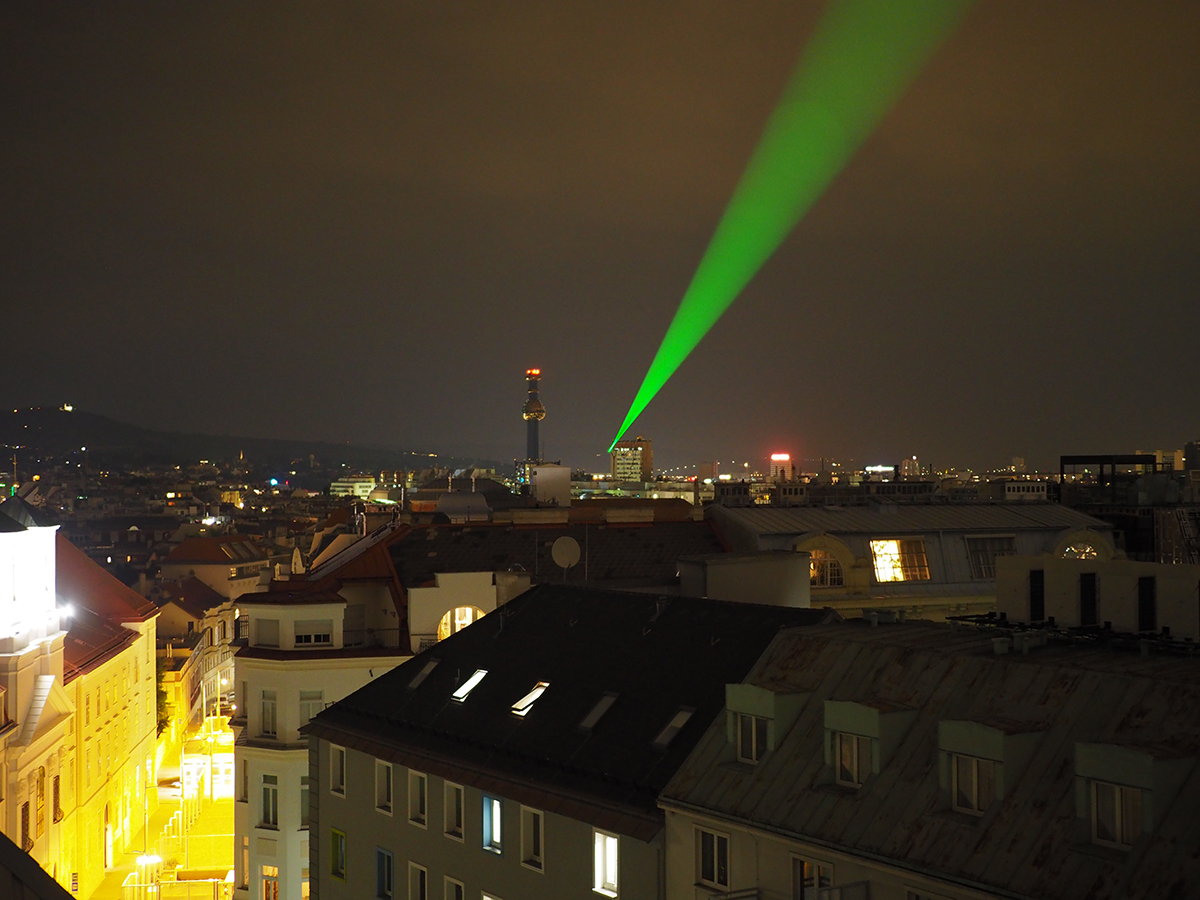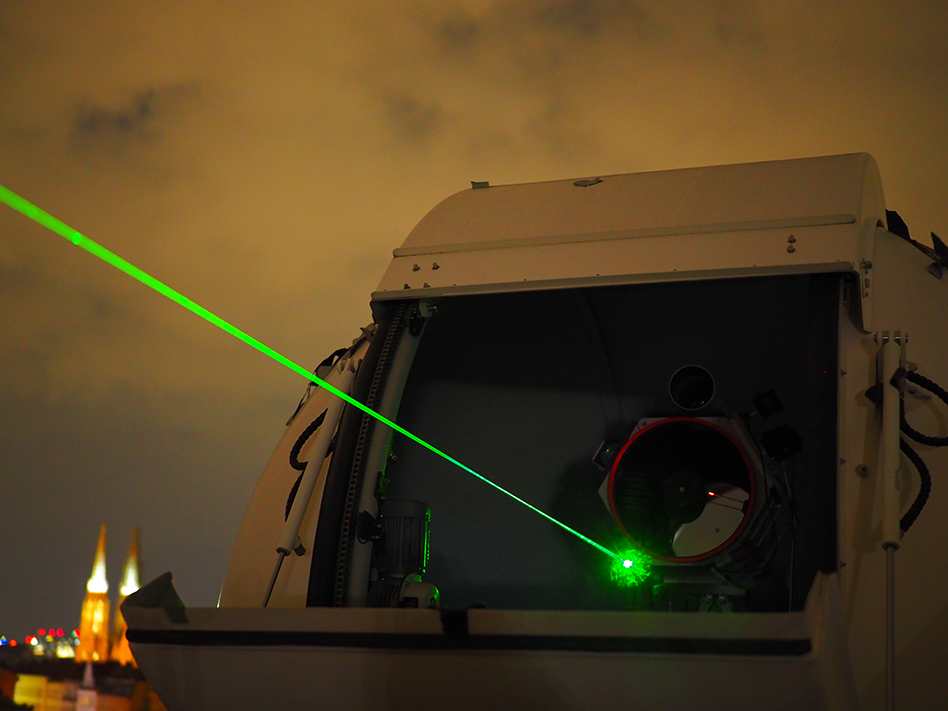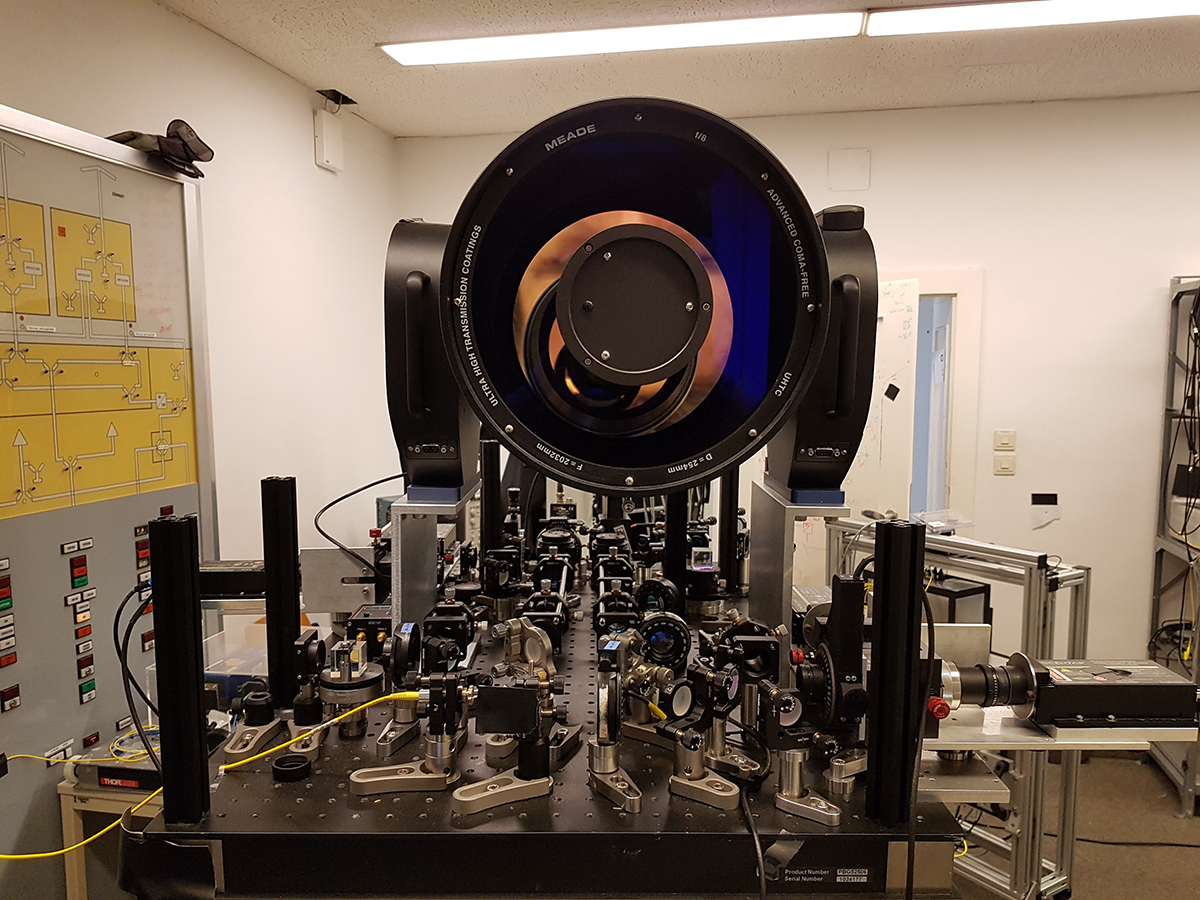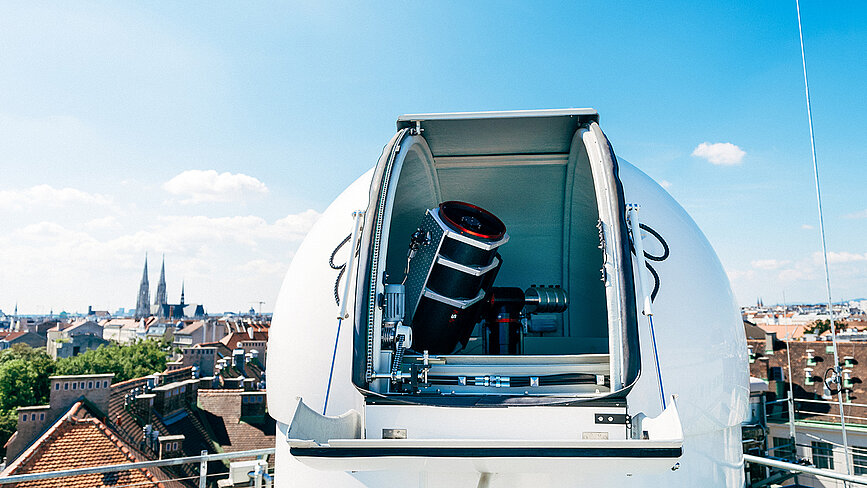



The absolute security of quantum cryptography is based on the laws of nature rather than the complexity of encryption. In quantum key distribution, entangled photon pairs are exchanged between sender and receiver. However, the delicate entanglement link is all to easily destroyed in daylight conditions. IQOQI-Vienna scientist Marcus Huber explains how he and his team went about keeping the quantum key safe. “Fiber-based quantum cryptography over long distance is still impossible to achieve, as the technology to sufficiently boost the signal does not exist as yet. The fragility of the entanglement makes wireless transmission through atmosphere also very difficult. We were able to show that even in the onslaught of photons in broad daylight, it is possible to transmit a quantum key over a distance of ten kilometers when working with entanglement of more than two dimensions.”
The Bisamberg experiment
The IQOQI-Vienna team set up a sending station on the roof of IQOQI-Vienna and a receiving station in the former TV broadcasting station in Bisamberg located ten kilometers away. The channels were aligned painstakingly with the help of lasers. At IQOQI, entangled photon pairs were created, one of which was sent to Bisamberg station while the other remained at the institute. The innovation in this new experiment is that the photon pairs were entangled in more than two dimensions. Instead of measuring only the polarization, which offers two dimensions or possible directions, the researchers entangled a second property of the photons.
In simplified terms, this second property can be thought of as the color or wavelength of the photons. "Actually, it’s more complicated than that, because there is an uncertainty between energy and time, and we can take advantage of that by measuring the arrival time of the photons at Bisamberg with very high precision," explains Lukas Bulla, the first author of the paper. The smaller the time packets in which the arrival of the photons is measured, the higher the dimensionality of the entanglement. For this to work, the researchers had to precisely synchronize two atomic clocks at Bisamberg and at IQOQI, which synchronise better than usual atomic clock precision at these timescales by using part of the entangled photon pairs.
More dimensions create stable entanglement
“The robustness of entanglement increases with the temporal resolution and the number of dimensions. At the same time, however, the data rate decreases because the complexity of high-dimensional measurement causes additional errors. One of the main advantages of our method is that we are able to continuously adapt the dimensionality of high-dimensional measurements. When external perturbances are present we can render the signal more robust, and when conditions are favorable, we optimize the data rate,” explains IQOQI scientist Marcus Huber. In this way, the team was able to demonstrate quantum key distribution one and a half hours after sunrise and entanglement until even later in the day.
The bottom line: quantum key distribution through atmosphere is feasible under realistic conditions. “Further improvements are planned to make around-the-clock operation possible. We know of no theoretical restrictions that would prevent this. The transmission path between IQOQI and Bisamberg is very similar to that between a satellite and a ground station. Which means that our technology could, in the future, serve to distribute secure keys on a world-wide scale and encrypt sensitive communication processes such as online banking safe against any hacking attempts”, says Huber.



Publication:
“Non-local temporal interferometry for highly resilient free-space quantum communication”, Lukas Bulla, Matej Pivoluska, Kristian Hjorth, et al., Physical Review X, 2023
DOI: https://doi.org/10.1103/PhysRevX.13.021001